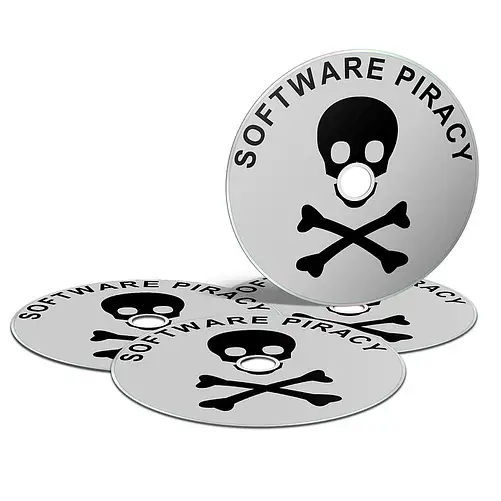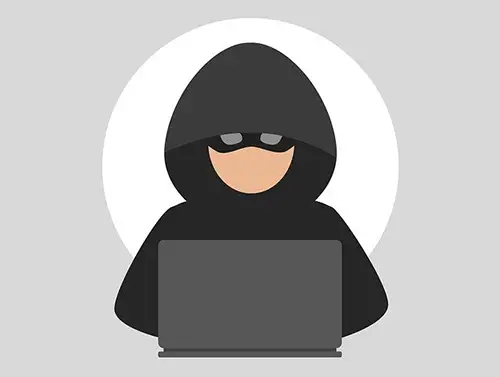Welcome to a quick guide on the various types of computer misuse. Computers are everywhere these days, and it is sad that computer misuse has also become a common occurrence in the world. But just what forms of misuse are there? Read on to find out!
P.S. What is considered as “computer misuse” differs from region to region. This is only a “generic guide”, and not a “lawful representation” in any way.
TABLE OF CONTENTS
 Misuse Types Misuse Types |
 Useful Bits & Links Useful Bits & Links |
 The End The End |
TYPES OF COMPUTER MISUSE

All right, let us now get into the details of the various types of computer misuse in this section.
1) DATA THEFT

The words “theft” and “steal” should ring a bell. Data and information can be stolen, and it is happening at an alarming rate in the modern cyber world. Let us first introduce “spyware”, a term that is closely related to data theft.
Spyware is loosely defined as malicious software designed to enter your computer device, gather data about you, and forward it to a third-party without your consent. Spyware can also refer to legitimate software that monitors your data for commercial purposes like advertising.
Now, spyware is commonly known to most people as “the bad application that steals information”. But I personally like the definition that Kapersky has given, as it highlights data theft in a different manner.
- If spyware is installed and collects information without consent, then it is data theft. For example, stealing credit card details.
- But if you have given consent “for better ads and services”, then it is legitimate and not data theft. For example, social media learning your search pattern and showing you related content that you like.
Yep, there is a fine line between what is data theft and what is not. The method of data collection and intention makes a world of difference.
2) IDENTITY THEFT
To follow up with data theft, there is another common form of cyber theft these days – Identity theft. This is specific to the “bad guys” stealing online accounts, logging in without permission, and doing all sorts of funky things with it.
3) PIRACY & ILLEGAL SOFTWARE DISTRIBUTION

This is yet another different kind of “data theft”, and it is specific to making copies of software applications. Again, this has been debated over many years. Various regions also have different takes on it, but in general:
- If a person paid and owns the software, then it is legal to make backup copies of the software.
- But if the person distributes copies of the software, then it is illegal and considered “software piracy”.
- It is a different story if the company that made the software has gone bust. Technically, nobody owns the legal rights to the software and anyone can copy/distribute it. This is also known as “abandonware”.
4) CYBER FRAUD

In the real world, we have conmen. In the digital world, we have cyber fraud that runs rampant. If you have stayed on the Internet long enough, pretty sure you will encounter one of these eventually:
- Your package is stuck in the custom. Please pay before we release the package.
- Your account has been compromised. Click on this link, and enter your old password to renew the account.
- An unauthorized payment has been made to your bank account.
- Congratulations! You have won the first prize!
- A police report has been made against you.
- The software has expired, please update your subscription.
- Your computer has been infected with a virus, click here to remove it.
Long story short, the common strategy for cyber fraud is to pretend to be an “official”, fear-mongering, or offer a prize as bait. Poor victims take the bait and end up losing their accounts and/or money.
5) UNAUTHORIZED ACCESS & USAGE

As it implies, unauthorized access and usage happen when someone:
- Uses a computer device without permission. This can be by means of “physically in front of the computer” or “remotely through the Internet”.
- Access an account that belongs to someone else.
- Access information that is confidential or private.
6) DENIAL OF SERVICE (DOS)
Denial of service (DoS) is a type of cyber attack designed to disable, shut down or disrupt a network, website or service.
In simple terms, “spam the server until it is unable to function properly”. This can be a form of cyber sabotage, cyber ransom (see below), or someone who has too much free time on hand.
7) CYBER SABOTAGE
In movies, we often see spies destroy evidence and burn down buildings as a form of sabotage. In the cyberworld, sabotage also happens in a similar manner:
- As above, denial of service. Spamming a server until it stops functioning.
- Deleting critical files and folders.
- Stealing data and releasing them publically.
- “Hostile takeover”, taking over the entire network.
- Changing user accounts and passwords.
8) CYBER RANSOM

In the movies, we often see kidnappers demanding a ransom to release a person. In the cyberworld, digital kidnappers don’t kidnap people. They hack into systems, change the passwords and hold the system for ransom.
9) INDECENT CONTENT
Last on the list, we have the infamous “world of adults”. Sure thing, some countries are more open to pornography and adult content. But there are lines that should not be crossed, such as making adult content with “child actors” or filming “funky stuff” without permission.
USEFUL BITS & LINKS

That’s all for this guide, and here is a small section on some extras and links that may be useful to you.
HACKING IS SUBJECTIVE
Some of you sharp ones should have noticed that “hacking” is not on the list. Personally, I don’t consider hacking to be an outright misuse. There are professional white hat hackers who do it for a living. That is, they hack systems to test the security and patch up loopholes.
When hacking is done with permission, it is not “misuse”. But when the intention of hacking is malicious, then it is illegal.
LINKS & REFERENCES
- Computer Misuse and Its Forms – Study Corgi
- Computer Misuse – Future Learn
THE END

Thank you for reading, and we have come to the end of this guide. I hope this has helped you to better understand, and if you have anything to share with this guide, please feel free to comment below. Good luck and may the cyber force be with you.
